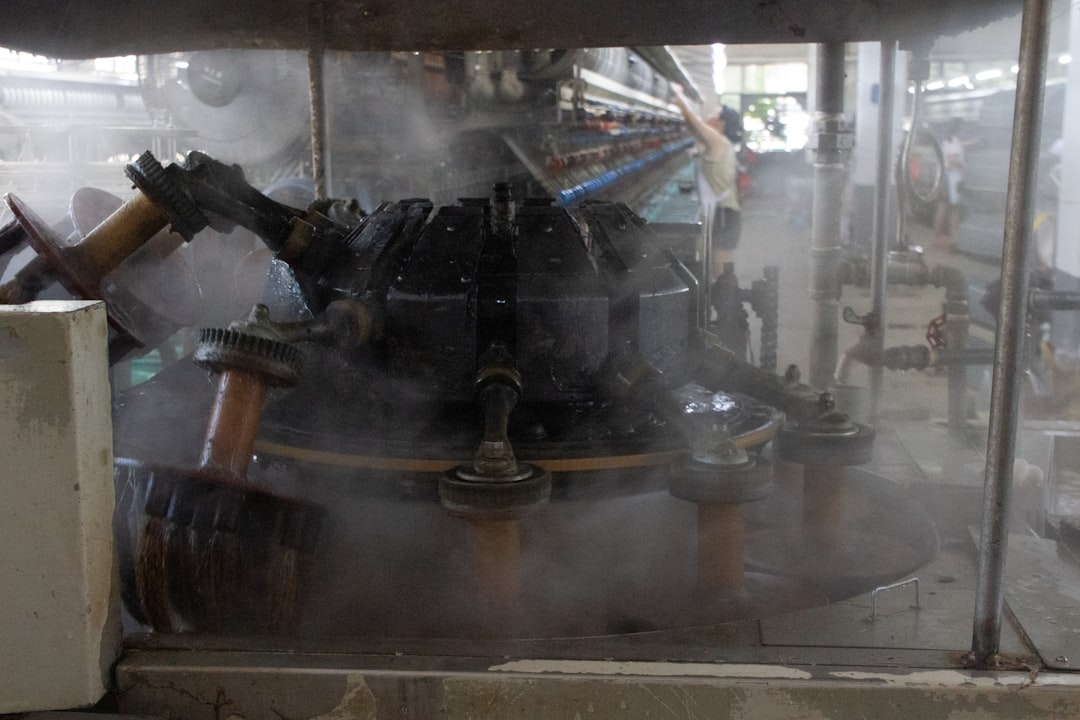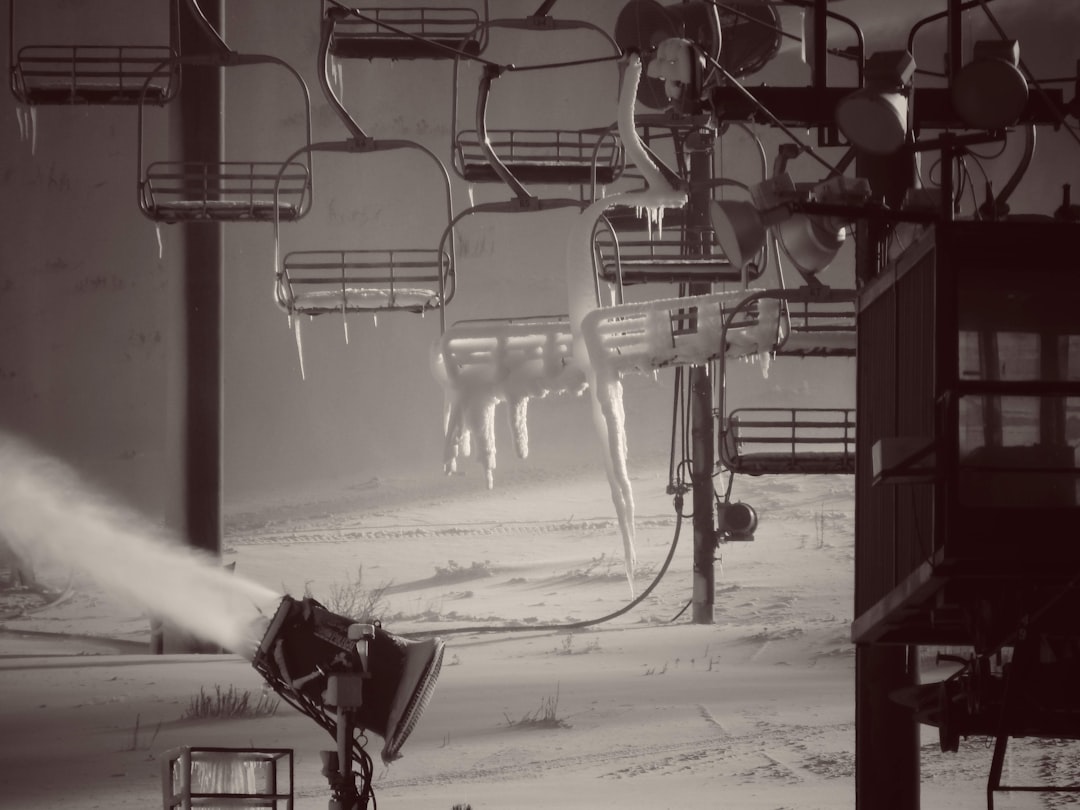

Engage prospects with a scan and streamline customer engagement with FREE QR code marketing tools by Sona – no strings attached!
Create a Free QR CodeFree consultation

No commitment

Engage prospects with a scan and streamline customer engagement with FREE QR code marketing tools by Sona – no strings attached!
Create a Free QR CodeFree consultation

No commitment
QR codes have evolved from marketing novelties into indispensable tools for connecting offline interactions with easily accessible online resources. Within industrial steam cleaning services, QR codes represent a practical answer to common frustrations such as missing key documentation at the point of service, manual compliance headaches, or lost opportunities for client engagement. By eliminating friction, empowering field teams, and giving facility managers instant access to vital information—whether cleaning logs, compliance certificates, or maintenance histories—QR codes reduce the chances of losing track of valuable data and missed follow-ups.
Traditionally, maintenance recordkeeping, chemical usage tracking, or appointment scheduling in this sector has been paper-heavy and prone to error or loss. This analog reality not only slows down decision-making but often means high-value prospects and repeat business can slip through the cracks, with critical details scattered or untracked. Strategic use of QR codes digitizes these processes with the Sona QR platform, ensuring every paper log, asset tag, and field interaction becomes a data point for efficiency, compliance, and customer experience. These are areas where small lapses can lead to outsized operational risk or lost revenue.
When industrial steam cleaning services embed QR codes throughout their workflows, they address multiple industry pain points simultaneously: elevating engagement, boosting lead capture, ensuring compliance, and continually improving processes. The following sections outline how leaders in this space can deploy QR codes to solve persistent challenges such as incomplete account data, untracked site visits, or inconsistent messaging, while driving measurable growth and process transparency.

QR codes bridge physical processes with digital records and insights, directly addressing persistent inefficiencies that hinder both compliance and customer experience in industrial steam cleaning services. The goal is to transform printed binders, handwritten forms, and static signage into interactive gateways to live instructions, forms, and records. When a crew member scans a code on a service tag and immediately opens the latest cleaning protocol or logs a task with a time stamp, accuracy and accountability rise while manual toil decreases.
Key friction points like the need to sift through binders for maintenance logs or relying on printed checklists prone to loss can cause costly delays or missed regulatory targets. Without a digital trail, businesses risk losing high-value prospects and failing audits. QR codes help standardize and centralize information without requiring special hardware or app downloads. With a camera-enabled device, staff and clients can execute tasks and access data in seconds.
Here is how modern approaches are solving these issues:
By shifting from static, analog workflows to QR-driven processes, industrial cleaning businesses not only capture more granular engagement data but also identify and nurture high-value accounts that might otherwise never be seen in the CRM. If you are replacing printed SOPs, paper time sheets, and manual job sign-offs with scannable, guided workflows, you will improve consistency and build an auditable record of quality that reassures clients and regulators alike.
Manual recordkeeping and siloed systems have long plagued the industrial steam cleaning sector, leading to lost data, missed follow-ups, and uncertainty about who is engaging with essential documentation. When high-value opportunities slip by, whether an anonymous facility manager reviewing compliance requirements or a lead tracking a maintenance log, revenue and operational continuity are at risk. QR codes help bring visibility and immediacy to tasks that were previously opaque.
Clients and crews often juggle heavy workloads and tight timelines. No one wants the friction of app downloads or the risk of relying on outdated printed materials. QR codes provide lightweight access to current information, connecting equipment, forms, and records in a way that is easy to maintain and scale. Because dynamic codes can be redirected, updates can be made centrally without reprinting.
QR codes directly address these industry realities:
Typical applications for QR codes such as accessing service records on a steam cleaner, linking to current safety data sheets for chemicals, or prompting feedback after a visit become solutions to the chronic pain of untracked leads, inconsistent messaging, and missed upsell moments. Over time, these small improvements compound into stronger client relationships, safer operations, and reliable growth.

Industrial cleaning workflows vary widely, and so do the information delivery needs. The wrong QR code format, or worse, no digital augmentation at all, forces teams and customers to rely on memory or outdated records, increasing the risk of oversight or missed upsell triggers. Matching the code type to the task ensures that each scan leads to the right action.
Service leaders in industrial environments should focus on formats that simplify access to frequently used resources, facilitate contact with the right team member, and allow data capture without friction. Dynamic QR codes are often the best fit because they provide editability and tracking without changing the printed code.
For compliance-heavy or customer-facing use cases, dynamic codes are preferred since they allow content updates and precise tracking. Static codes can be sufficient for evergreen assets such as a general company contact card or a link to a fixed safety policy, but most operational scenarios benefit from the flexibility and data capture that dynamic codes provide.

Many growth initiatives stall because physical data collection and customer engagements are not captured systematically or because repeated opportunities are hidden among anonymous interactions. QR codes convert every physical asset or document into a measurable touchpoint, producing the signals needed to guide sales, service, and customer success efforts.
The key is to place QR codes where they naturally fit into existing behaviors. If a supervisor always checks the maintenance tag on a steam generator before a shift, that tag is the right place to insert a digital action. If a client reviews invoices in their office, that document can become a gateway to satisfaction surveys or contract expansion discussions.
Effective QR strategies focus on high-value areas:
By mapping out and addressing gaps where valuable engagement signals are otherwise lost, companies create a closed loop that increases the likelihood of capturing both new opportunities and segmenting existing accounts for targeted outreach. Even modest improvements in scan-to-lead conversion on invoices or signs can meaningfully expand the pipeline over a quarter.

Day-to-day pain points like manual audits, untracked feedback, or delays in compliance reporting compound over time, threatening both customer retention and revenue growth. QR codes align everyday actions with digital records so that nothing slips through the cracks.
The most effective use cases integrate directly into core workflows. That means placing codes on physical assets, within documentation that crews already handle, and in client-facing materials that benefit from simplified action. The following use cases are proven starting points that can expand as teams mature.
These use cases help industrial cleaning services move beyond reactive, paper-based operations by surfacing engagement signals as they happen. Teams can follow up in context, enforce standards across locations, and learn from the data patterns that emerge over time.
A longstanding challenge for industrial service marketers is working with incomplete or anonymous data. Prospects researching services through offline material, field crews accessing resources without logging in, or site supervisors dealing with equipment maintenance can all remain invisible to traditional CRMs. This invisibility leads to missed upsell, cross-sell, or renewal opportunities.
Modern QR-integrated workflows make it possible to deanonymize engagement without adding friction. Each scan captures the context of the action such as which code was scanned, where it was placed, and when it occurred. With thoughtful landing pages and forms, you can progressively profile users over time and sync that information back to your CRM, marketing automation, and ad platforms. For deeper strategies on using buying signals, explore Sona’s intent data.
Here is how to turn scans into segmented audiences:
With each QR scan providing new visibility, industrial cleaning firms transform previously anonymous engagement into actionable, targeted sales and service opportunities. Over time, this leads to improved renewal rates, faster response to issues, and more consistent upsell performance across accounts.
Disconnected campaigns and siloed data are common culprits behind inconsistent customer experiences in industrial steam cleaning, often leaving prospects uncertain and causing marketing spend to underperform. QR codes provide the connective thread that unifies all channels and shortens the path from interest to action.
The most effective programs place QR codes wherever your audience already engages with your brand. This includes print collateral, signage on assets and vehicles, job site materials, and live events. Each placement should use a clear call to action, role-appropriate destination content, and tracking parameters for attribution.
When every channel funnels actionable data back into one ecosystem, companies prevent wasted spend from disconnected messaging and ensure each prospect or client receives a context-appropriate follow-up. A centralized platform like Sona QR helps you manage codes at scale, monitor performance, and sync scan data with your CRM and ad platforms for full-funnel attribution.
A strong QR program follows a repeatable process: define the use case, select the right code type, design for environment and intent, deploy strategically, and optimize with data. The steps below translate that approach into a practical checklist for industrial steam cleaning teams.
Start with a business problem worth solving and a clear outcome. For example, reduce the time to verify compliance at a job site, increase quote requests from fleet signage, or capture training completion data before a technician operates a specific machine.
The choice of static versus dynamic codes affects flexibility and data capture. In most operational and customer-facing scenarios, dynamic codes are preferable because they allow updates and tracking without reprinting.
Design for scanning in real-world environments where lighting, angle, and distance vary. Always include a clear call to action and enough visual contrast for easy recognition.
Place codes where they solve friction or convert intent. Prioritize the surfaces and documents that your teams and clients already use.
Treat scans as signals to learn from and improve. Build feedback loops between scan performance and process outcomes.
By following this checklist, companies methodically close process gaps that traditionally allowed high-value prospects and compliance triggers to slip by unnoticed. Start with one or two high-impact use cases, build measurement from day one, and expand as you validate results.

Many industrial steam cleaning firms struggle to link real-world engagement to business outcomes, resulting in underreported ROI and unrecognized growth levers at the account level. Tracking only impressions of print materials or counting distributed brochures offers little insight into what actually drives action.
Robust QR analytics directly address this challenge by capturing not only that a scan happened but also the context and outcome. The data you collect should inform both operational improvements and marketing investments, enabling teams to prioritize the touchpoints that move the needle.
Sona QR provides a centralized dashboard for scan tracking and channel analysis, while Sona extends capabilities to identity resolution, multi-touch attribution, and buyer journey mapping. Together, they connect anonymous scans to known records and unify fragmented touchpoints across buying stages. The result is a clear line of sight from real-world engagement to measurable outcomes.
As QR deployments mature, small execution details can unlock outsized returns. Consistency, clarity, and automation are the hallmarks of programs that scale across fleets, facilities, and customer segments without creating operational overhead.
Focus on the tips that match your most common media and workflows. In industrial steam cleaning, that typically includes equipment tags, safety signage, job documentation, invoices, and fleet or field apparel.
These tactics help industrial steam cleaning services replace guesswork with actionable insight. By aligning QR placements with real user needs and building automation behind each scan, teams raise adoption, strengthen compliance, and create reliable engines for lead generation and customer success.
QR codes now serve as the connective tissue between every field operation, client interaction, and compliance checkpoint in industrial steam cleaning—from anonymous first touch to revenue conversion. The shift to QR-driven engagement empowers businesses to capture and act on valuable signals across the entire customer and asset lifecycle, dissolving bottlenecks created by incomplete data, untracked prospects, or outdated workflows. When physical touchpoints lead directly to digital actions and records, leaders gain the clarity to allocate resources wisely and improve outcomes consistently.
Industrial steam cleaning services stand to gain immense operational and commercial value from thoughtful QR code integration. By unlocking real-time access to information, systematically capturing engagement data, and converting every field interaction into an actionable business signal, QR codes help teams overcome industry pain points around lost leads, outdated documentation, and disconnected workflows. With the right analytics and process discipline, every scan becomes a step toward superior compliance, enhanced customer experience, and sustained revenue growth. For a streamlined way to generate, manage, and attribute QR campaigns at scale, platforms like Sona QR and Sona.com provide the infrastructure to move from scans to outcomes with confidence. Start creating QR codes for free.
The best industrial steam cleaning services don’t just deliver cleanliness—they deliver efficiency and safety through seamless access to critical information. QR codes empower your operations by enabling instant access to detailed equipment manuals, maintenance logs, and safety protocols right at the point of use. This not only enhances workforce productivity but also ensures compliance and reduces downtime.
Sona QR simplifies this transformation with dynamic, trackable QR codes that can be updated instantly without reprinting, allowing you to connect every scan to actionable insights and operational improvements. Imagine knowing exactly which resources your technicians access most and optimizing training and support accordingly.
Start for free with Sona QR today and make every scan a step toward smarter, safer, and more efficient steam cleaning operations.
Industrial steam cleaning services using QR codes improve process efficiency, ensure compliance, enhance client engagement, reduce manual errors, and provide real-time access to vital documentation and records.
They replace analog content with digital resources accessed via QR codes, capture actions at the source with time-stamped logs, enable dynamic updates without reprints, and leverage analytics to optimize engagement and compliance.
Look for providers that integrate QR codes into their workflows to digitize documentation, track compliance, enable instant feedback, and provide measurable outcomes through analytics and CRM integration.
Industries with compliance-heavy environments, equipment maintenance needs, and chemical handling such as manufacturing plants, facilities management, and heavy industry commonly use these services.
While the article focuses on QR code integration, industrial steam cleaning services generally reduce chemical usage and waste, contributing to safer and more sustainable cleaning processes.
Dynamic QR codes are preferred for operational flexibility and tracking, while static codes are suitable for fixed information like contact cards; formats include web links, vCards, SMS or email triggers, Wi-Fi provisioning, and document downloads.
Effective placements include equipment tags, chemical storage labels, service invoices, facility signage, field uniforms and vehicles, and job site documentation for seamless access and engagement.
QR codes provide instant access to up-to-date safety manuals, cleaning protocols, and regulatory documents, while capturing audit trails and ensuring that compliance checks are completed and recorded accurately.
Yes, QR codes on job completion forms can link to tailored feedback surveys, enabling real-time customer input, identifying at-risk accounts, and triggering follow-up actions for service improvement.
They convert physical interactions into measurable digital signals that improve lead capture, enable targeted follow-ups, enhance customer retention, and provide data-driven insights for sales and marketing optimization.
The process includes defining use cases, selecting appropriate QR code types, designing for user intent and environment, deploying codes strategically, and tracking and optimizing performance using analytics.
They use analytics to monitor scan volume, conversion rates, location and timing data, and integrate scan data with CRM systems to attribute revenue and optimize marketing and operational efforts.
Use unique codes per placement, include UTM parameters for tracking, automate follow-ups, train users on benefits, and innovate with high-traffic surfaces to ensure consistent engagement and data capture.
Use Sona QR's trackable codes to improve customer acquisition and engagement today.
Create Your FREE Trackable QR Code in SecondsJoin results-focused teams combining Sona Platform automation with advanced Google Ads strategies to scale lead generation

Connect your existing CRM

Free Account Enrichment

No setup fees
No commitment required

Free consultation

Get a custom Google Ads roadmap for your business






Launch campaigns that generate qualified leads in 30 days or less.
